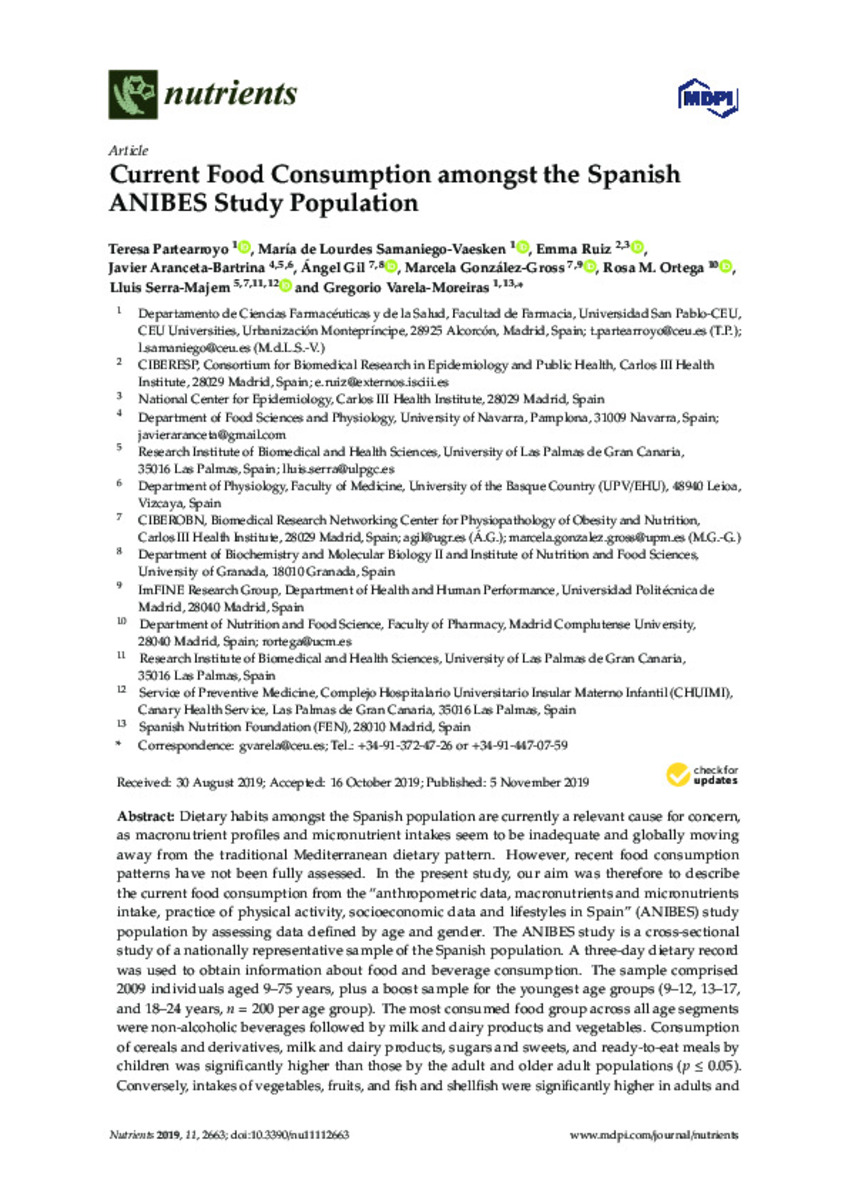Current Food Consumption amongst the Spanish ANIBES Study Population
Palabras clave :
Materias Investigacion::Ciencias de la Salud::Nutrición y dietética
ANIBES study
Spanish population
Consumption
Dietary pattern
Food group
Food subgroup
Intake
Fecha de publicación :
2019
Nota:
This article is an open access article distributed under the terms and conditions of the Creative Commons Attribution (CC BY) license (http://creativecommons.org/licenses/by/4.0/).
Cita:
Partearroyo, T. (Teresa); Samaniego-Vaesken, M. L. (María de Lourdes); Ruiz, E. (Emma); et al. "Current Food Consumption amongst the Spanish ANIBES Study Population". Nutrients. 11 (2663), 2019, 1 - 15
Aparece en las colecciones:
Estadísticas e impacto
0 citas en

0 citas en

Los ítems de Dadun están protegidos por copyright, con todos los derechos reservados, a menos que se indique lo contrario.







